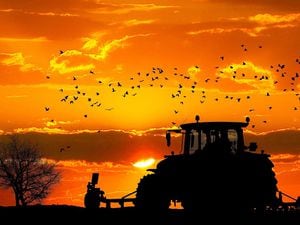Encouraging early prospects for maize silage
Initial analysis of this season’s maize silage suggest farmers will be able to look forward to crops that will perform well in diets, according to Trouw Nutrition GB who run the UKs largest forage analysis laboratory.
Reporting on over 700 samples received by the company already this year, Technical Director Dr John Allen says that the initial signs are encouraging but advises farmers not to rush into clamps and give feeds a chance to ferment fully.
“The growing season was typified by crops struggling to mature properly and many are still in the ground,” he said. “Several samples we have seen are not yet fully fermented and will benefit from more time in the clamp before being added to diets. That said, once fed they have the potential to perform well.”
The table compares this year’s initial crops with a similar sample from last year and for all the main parameters this year’s crops are on a par with last year. Dry matter is similar at 32.9 per cent. The ME content is similar at 11.25MJ while starch is close to 30 per cent.
“The ME at 11.25MJ is consistent with early samples seen over several years. NDF content is slightly lower this year with a higher lignin content suggesting that despite the season some crops were harvested at a mature stage, possibly as they were left in the field to allow the stem to dry out more before harvest.”
Dr Allen says the key will be to leave crops to fully ferment and to allow starch degradability to increase as the fermentation acids break down the protein matrix which surrounds the starch granules.
“Just because you have maize in the clamp, it does not mean you should rush to include it in diets. Allowing a complete fermentation will improve feeding characteristics and clamp stability.”
Dr Allen says it will be important to assess total silage stocks and plan for the full winter. “With some good quality grass silage and promising maize it will be possible for some farmers to increase the proportion of forage in the diet.
“However, this should not be done if it increases the risk of running out at the back end of the season. The prudent approach will be to assess stocks, set realistic forage intakes and then to supplement forages to deliver good rumen health and cost-effective production.
“While the initial maize results are encouraging it will be important to make the most of the feed, allowing it time to ferment and then incorporating it in a well-balanced diet,” Dr Allen concluded.
-





